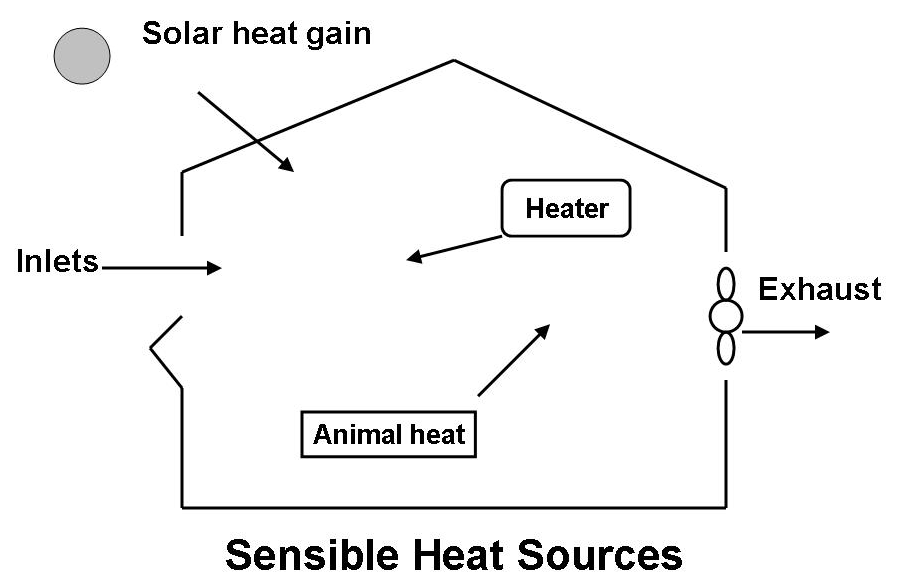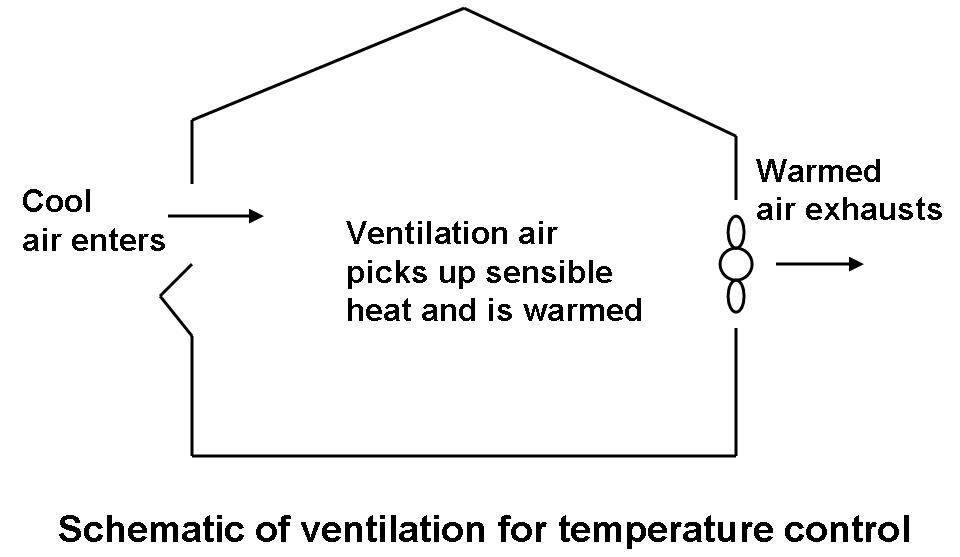Chapter 7 - Air Exchange for Temperature Control
Chapter 7 - Air Exchange for Temperature Control
Relationships among the psychrometric characteristics play important roles in the ventilating process. To control the temperature within a building the sensible heat produced by the broilers and supplemental heaters and the heat either gained or lost through the building surfaces (i.e., ceiling, walls, windows, etc.) must be balanced with the heat removed by the ventilation air (see Figure 7.4 below).
Figure 7.4 - Sensible heat sources and losses in a poultry house


Through ventilation, cold or relatively cool, outdoor air is brought into the poultry house. Sensible heat produced within the building is transferred to the cool air and warms the air. This warm air is exhausted from the building and replaced with more cool outdoor air and the process is repeated. This process is illustrated in Figure 7.5 below. The amount of air exchanged to control temperature depends on the indoor and outdoor temperature difference, number and age of broilers housed, and building insulation level.

If the sensible heat sources remain constant, reducing the amount of air exchange will raise the indoor air temperature. Increasing the air exchange will lower the indoor temperature. If the air exchange rate and sensible heat sources are kept constant the indoor temperature will shadow outdoor air temperature changes.
As broilers grow, so does the amount of sensible heat they produce. To remove the increased amount of sensible heat and maintain a constant indoor air temperature, the air exchange rate per broiler needs to increase as the birds grow.
Some sensible heat may be used to evaporate liquid water (i.e., spilled water, wet feces and spraying mists). In cold weather when sensible heat from the broilers and heaters is needed to maintain the desired indoor temperature, the heat used to evaporate spilled water is a loss, unavailable to heat the building. In hot weather when excess sensible heat is available sprinklers and evaporative cooling are used to help dissipate excess heat.
